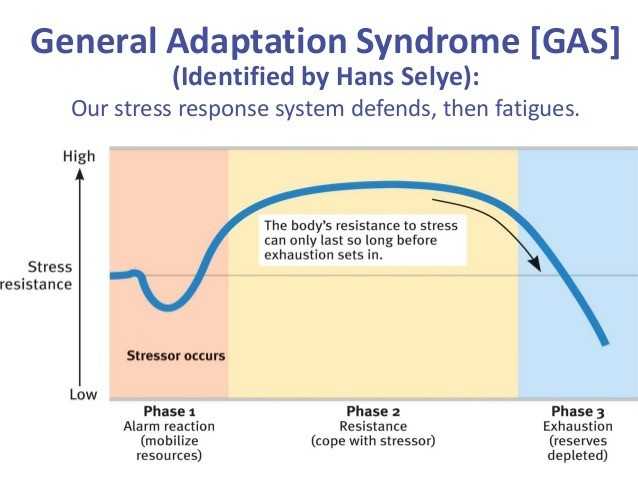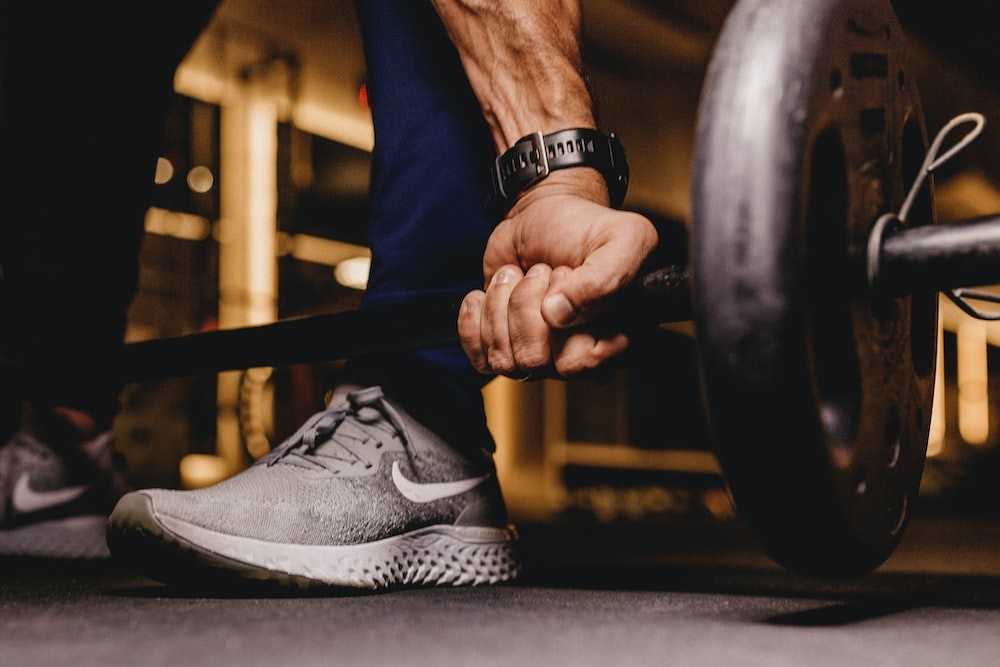This is an age-old question, but unfortunately there isn’t a clear answer on this subject. But we can make certain conclusions based on collective information from exercise science and various strength and sports coach’s experience.

One proven fact is that, hitting a plateau in your workout is a common & natural phenomenon. A workout/exercise plateau is a stage, where you stop seeing progress despite being consistent with your workout for long, because the body adapts/get used to the demands of your current workout/fitness routine.
We need to understand that, longer the human body will be exposed to a particular type of stress, more efficient it would be at adapting to it. This is where the body needs to be given a change, a new stimulus, a new challenge.
Always remember that, progress is never linear or consistent. You cannot keep gaining muscle mass or strength, or losing fat at the same rate. The journey of your progress would be alternated between highs and lows, to sometimes no progress at all.
To know the reason behind this, we need to understand the General Adaptation Syndrome. Dr. Hans Selye was a medical researcher credited with the discovery of GAS. He was the first professional to give a technical term to the observation of how organisms change when exposed to a stimulus. He published research on this subject in 1936, and it still serves as the basis for our understanding of how organisms react to their environments.

The way that the body responds to stress, according to the GAS model, can be broken up into three stages:
- Alarm Reaction Stage – This is the initial reaction to the stressor. In the initial 6 to 48 hours after exercise (the stress stimulus), person may experience fatigue or joint stiffness, and after 24 to 48 hours delayed-onset muscle soreness (DOMS) may kick in. The alarm reaction stage stimulates an increase in oxygen and blood supply, neural recruitment to working muscles, bone formation, increased joint load and tolerance, and connective tissue strengthening.
The benefit to this response is that over time when exposed to small doses of the same stressor, the body will adapt to overcome these challenges. The key to inducing a positive response is to use the principle of progressive overload, increasing the intensity or volume of exercise programs using a systematic and gradual approach.
2. Resistance Development Stage – Consistent training will move the person into the resistance development stage. This is the stage where clients will begin to adapt to their training in a way that enhances their performance. This phase lasts from about 4-16 weeks.
The human body adapts to repeated training sessions by increasing its ability to efficiently recruit muscle fibres and distribute oxygen and blood to the proper areas of the body. By applying progressive overload, the client will continue to improve their performance and ability to overcome the challenges that they are faced with.
3. Exhaustion Stage – The exhaustion stage describes prolonged stress or stress that is intolerable, leading to exhaustion or distress. A stage generally seen after 16 weeks.
Some negative consequences of this stage include: Stress fractures, Muscle strains and ligament sprains, Joint pain, & Emotional fatigue. Allowing for sufficient rest between sets and/or sessions as needed can help reduce the risk of entering this dangerous stage.
When such a thing happens, of course frustrations sets in, as you see your hard work going in vain. But there is nothing to really worry about, as there are numerous ways to get passed the plateau and continue your growth.
You hit a workout/fitness plateau if you have been following the same type of routine day in and day out, for a very long period of time. Because of which your body adapts to the stress of the workout, and it starts burning lesser & lesser calories, and reduces hypertrophy and strength response, with the same stress, with which once you were getting amazing gains.
You will find that the workout which used to challenge you once, has now become quite easy. You are now stuck with the gains, and instead are losing strength, muscle mass & gaining weight.
On top of that, the workout no more sparks your interest, the way it used to. Instead of feeling energetic, you feel low on energy and enthusiasm. The motivation to workout has gone down.

Ways to break the workout plateau:
- Change your workout – probably the most common and simplest advice you can adhere to, to get back on track. And there are several ways to do it. But remember, changes don’t always means ramping up the workout, as many people think. Sometimes, your body may be under a lot of stress, and you may be overdoing things. In such cases, it’s time to slow down.
- Change Intensity – if you have been doing very high intensity workouts. For e.g. lifting maximal weights in every workout, or doing high intensity interval training in every session, then it’s time to step back, and change your workout to moderate weight, low intensity endurance workouts.
And if you haven’t been pushing yourself hard enough. It’s time to ramp-up. Start lifting progressively heavier weights, reduce the time under tension, time between sets, a greater number of sets per workout etc. Challenge yourself with addition of eccentric loading, drop sets, and super sets. For endurance workouts, add speed work, high intensity interval circuits etc.
- Change frequency – frequency is ‘how often’ are you doing your workouts. How many days in a week? If you have been restricting your frequency to 3 days a week, try to add a day of extra workout. If it’s 4, try and move up to 5 days/week.
Similarly, if you have been pushing your body 6 days/week, with intense workouts without a break. This may be the time you should be taking the much-deserved break. Your body is showing you the signs.
- Change Volume – or ‘how long’ do you workout. I’m not against high volume workouts, they have their place. But most people really don’t need to spend hours in the gym, because a lot of individuals have been convinced that more training means better results. I have seen people trying to do everything they can think of in a single workout.
In most cases, 3-4 exercises per body part, with 3-4 sets each, is more than enough for excellent hypertrophy response. But there are individuals performing virtually double the amount. That’s simply being inefficient. Workout has to be hard, but it’s not to kill you. Remember the famous quote: “Stimulate, don’t annihilate”.
- Change Type – I know you love the workout you are doing. But it’s always better to challenge the body in a different way. Try a new activity, a sport, a new tool, a new exercise pattern.
Have you been doing weight training day in and day out? I know you love it. But, believe me, you would be really amazed to feel the change, if you try your hand on sprint work, a light jog/walk, play a sport, join a Yoga class.
If you love strength training, try changing the tool. Instead of using machines, dumbbells & barbells, try resistance bands, body weight workouts, sandbags, battling ropes etc.

2. Periodization – one of the best ways to design your program, is by using the periodization principles. This is even more important in case of competitive athletes. Periodization involves proper planning of your workout in terms of intensity, frequency, volume & type, keeping the end goal in mind.
In periodization, training is broken down into time periods called macrocycles, mesocycles, and microcycles. These cycles relate to how muscles respond to stress and fatigue. Macrocycles are long-term training periods that last from six months to a year; mesocycles can last anywhere from two weeks to a few months; microcycles are usually a week in length. The purpose, of course, is to challenge the body in different ways, at different times, and at different intervals.
3. Check your Diet & Sleep – workout plateau is not just due to stale workouts, but it can be absolutely due to a bad diet and sleep deprivation. We all have different lifestyles and different challenges to deal with.
Due to a multiple lifestyle stresses, be it family tensions, financial stresses, environmental stress, medical issues etc. we tend to neglect our diet and sleep. But this can have a long-lasting impact on your health and overall recovery. That’s why a powerful workout demands, an equally powerful recovery, in terms of sleep and nutrition.
Assess your sleep patterns. Are you taking adequate sleep? Is the sleep quality good? Are you waking up fresh or tired? Are you tired the entire day or have the energy needed to have a productive day?
Similarly, assess your nutrition. Are you eating enough calories? Is your protein intake adequate? Are you deficient in any micronutrients? Don’t shy away from adding supplements to fulfill your needs, where needed.
4. Take Professional Help – all these changes aren’t easy to make by a novice, and even by an intermediate lifter or athlete. That’s where professional coaching comes in.
An experienced coach can be really helpful in such cases. They can do proper assessment, and tell you where are you going wrong and how to make small changes to break the plateau. Coaches also help in proper tracking and follow-ups, which are of even more importance during your journey.
5. Give Time – after understanding all the above variables, we need to reflect on the most important variable i.e. ‘time’. Have you given yourself enough time to really see the changes? Are you consistent enough all this while with your workouts, diet and sleep patterns?
Any goal worth achieving takes time, consistency and patience. You can’t build a word class physique in matter of weeks or months, or even 1-2 years. It takes a hell lot more, and this is where impatience sets in. Therefore, think, whether you have really hit a plateau or its just impatience.

A 2014 study, investigated the effects of varying strength exercises and loading scheme on muscle cross-sectional area (CSA) and maximum strength after 4 strength training loading schemes: constant intensity and constant exercise (CICE), constant intensity and varied exercise (CIVE), varied intensity and constant exercise (VICE), varied intensity and varied exercise (VIVE).
Forty-nine individuals underwent twice a week training for 12 weeks. Squat 1 repetition maximum was assessed at baseline and after the training period. The whole quadriceps CSA increased significantly in all of the experimental groups from pre-test to post-test in both the right and left legs. The CIVE group had greater strength increments than the other training groups.
The findings suggest: (a) CIVE is more efficient to produce strength gains for physically active individuals; (b) as long as the training intensity reaches an alleged threshold, muscle hypertrophy is similar regardless of the training intensity and exercise variation.



